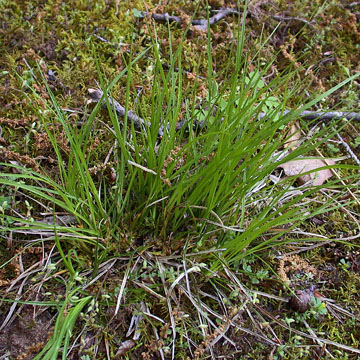

Carex umbellata - (image 1 of 6)
Taxonomy
Family: Cyperaceae
Section Acrocystis
Habitat
Dry to mesic, circumneutral to calcareous soil, in part shade or sun.
Associates
Distribution
Newfoundland to MN (also Saskatchewan and British Columbia), south to VA, GA, MO, and TX; Greenland.
Morphology
Densely tufted perennial; stems basally fibrillose, 5-10(-20) cm, much surpassed and often concealed by the leaves; leaves 1-2.3(-3.8) mm wide; staminate spike terminal, 4.6-13 mm, sometimes with a short pistillate spike just beneath it, the subtending bracts of this pistillate spike scale-like and shorter than the staminate spike; 1-3 near-basal, short-pedunculate pistillate spikes 4-10 mm generally associated with each flowering stem, more or less removed from the terminal staminate spike; pistillate scales reddish brown with narrow white margins, ovate, 2.8-3.9 mm long, equaling or exceeding the perigynia, acute to acuminate at the apex; perigynia 2.2-3.2 mm long, pale green maturing to pale brown, veinless, obovoid, obtusely trigonous; beak straight, strongly 2-edged, 0.4-1 mm, weakly ciliate-serrulate, with apical teeth 0.1-0.2 mm; achenes brown, ellipsoid, obtusely trigonous.
Notes
Fruiting mid March to June
Wetland indicator: NA
This sedge is often found near ant hills and when the perigynia are shed ants can often be seen carrying them away. Similar to C. tonsa but with shorter perigynia (2.2-3.2 mm long vs. 3.1-4.7 mm long) with shorter beaks (0.4-1 mm vs. 0.9-2 mm).
References
Ball, P.W. and A.A. Reznicek. 2002. Carex, In: Flora of North America Editorial Committee, Eds. Flora of North America North of Mexico. Volume 23. Oxford University Press, New York.
Gleason, Henry A. and A. Cronquist. 1991. Manual of Vascular Plants of
Northeastern United States and Adjacent Canada. Second Ed.
The New York Botanical Garden. Bronx, NY
|
© Michael Hough 2018 |